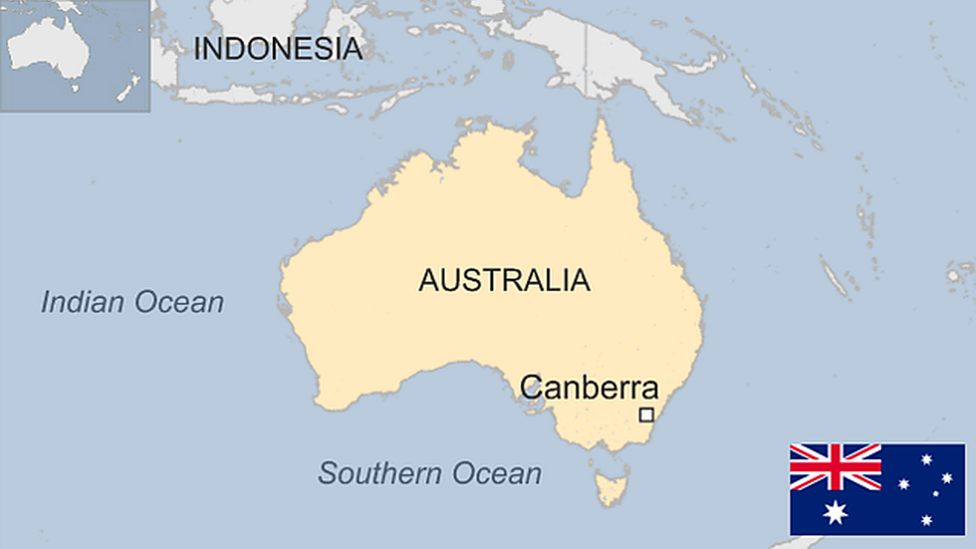Cooler weather brings relief to fire-ravaged Australia
- Published
NSW Emergency Minister Mike Gallacher: "If we get low humidity and wind we will have a problem"
Cooler weather has brought some relief to south-east Australia as fire crews continue to battle bushfires across several states.
Temperatures in New South Wales have fallen more than 10C, after one of the highest-risk fire days in its history.
But scorching conditions are predicted to return at the weekend and new fires are spreading despite the drop, authorities say.
The fires have destroyed buildings in New South Wales, Victoria and Tasmania.
Firefighters in Queensland are monitoring conditions closely in the state's south, as hot weather moves towards the coast. Temperatures are forecast to reach the high 40s in some parts.
'Catastrophic'
Across the Sydney area top temperatures fell to below 30C on Wednesday, after passing 40C on Tuesday.
The New South Wales Rural Fire Service (RFS) has downgraded fire danger ratings around the state following a favourable change in conditions overnight.
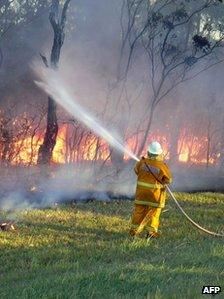
Hundreds of fire crews have been tackling the blazes
On Tuesday four areas had been given a "catastrophic" fire danger rating, meaning that if fires broke out they would be uncontrollable and fast-moving, so residents should leave.
However, despite the cooler weather, more than 130 fires are still burning in New South Wales, around 30 of which have not been contained.
The blazes are along the coast, and also in the north-west of the state, but the largest concentration is in the south-east, around the Canberra area, external.
Fire services are trying to contain a big fire still burning near Cooma, 100km (60 miles) south of Canberra. On Tuesday, authorities had advised residents to seek shelter, saying it was too late to leave.
Thousands of livestock are estimated to have died in the bushfires. All national parks, state forests and reserves have been closed to the public.
RFS Commissioner Shane Fitzsimmons warned that conditions remained dangerous despite the cooler weather.
"We've still got a lot of fires. We've still got a lot of fire activity across NSW and as we speak we're getting reports of new fires in places like Lithgow that are developing," he told ABC News.
"And some potential for risk with the current fire activity that we've got burning since yesterday, particularly in light of that slow-moving front that continues to travel through large areas of NSW today."
Above 50C
Meanwhile, teams in Victoria have managed to contain a blaze which destroyed the historic Carngham Station homestead.
The state's Country Fire Authority said the mild, cool conditions overnight had been "a great help to the fire suppression effort".
A fire is still burning out of control by the Tasman peninsula, near areas already hit by blazes over the weekend. More than 20,000 hectares of land and 120 homes have been razed.
Teams have been searching through ravaged buildings and a number of people remain unaccounted for, but no deaths have been reported.
"My advice is there are no reports of missing persons in circumstances that cause us to have grave fears for their safety at this time," Tasmania's Acting Commissioner of Police Scott Tilyard said in a statement., external
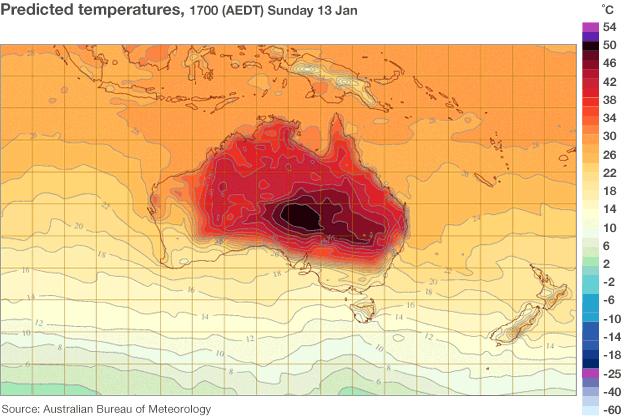
Temperatures have been so high the Australian Bureau of Meteorology has increased its temperature scale to 54 degrees, and added a new colour code.
The fires follow days of searing heat. The national average maximum daily temperature exceeded 39°C from 2-8 January, breaking a previous record of four consecutive days of such heat.
Average national top temperatures on Monday of 40.33C set a new record.
The bureau has added new colours to its forecast chart to indicate temperatures above the previous 50C-limit because of the heat wave.
It said extreme temperatures would continue in Australia for the next week.
"The cool change across south-eastern Australia last night has delivered some relief for southern Australia, but we are by no means through the woods yet, with very hot temperatures forecast for Western Australia today, and building again throughout central Australia," Assistant Director of Weather Services Alasdair Hainsworth said in a statement., external
- Published9 January 2013

- Published9 January 2013
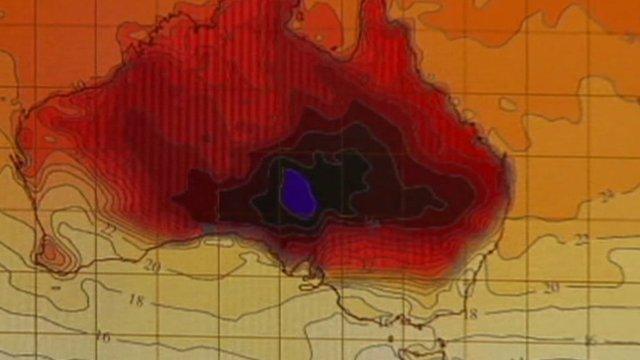
- Published6 January 2013
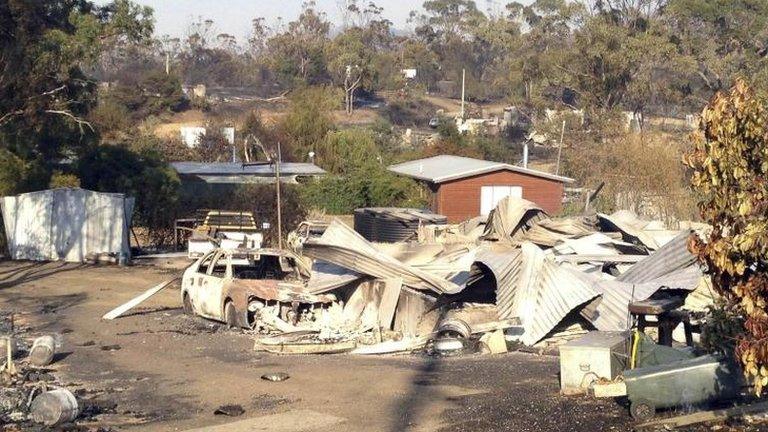
- Published14 April 2023
